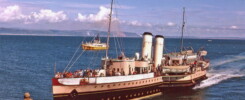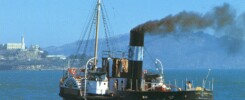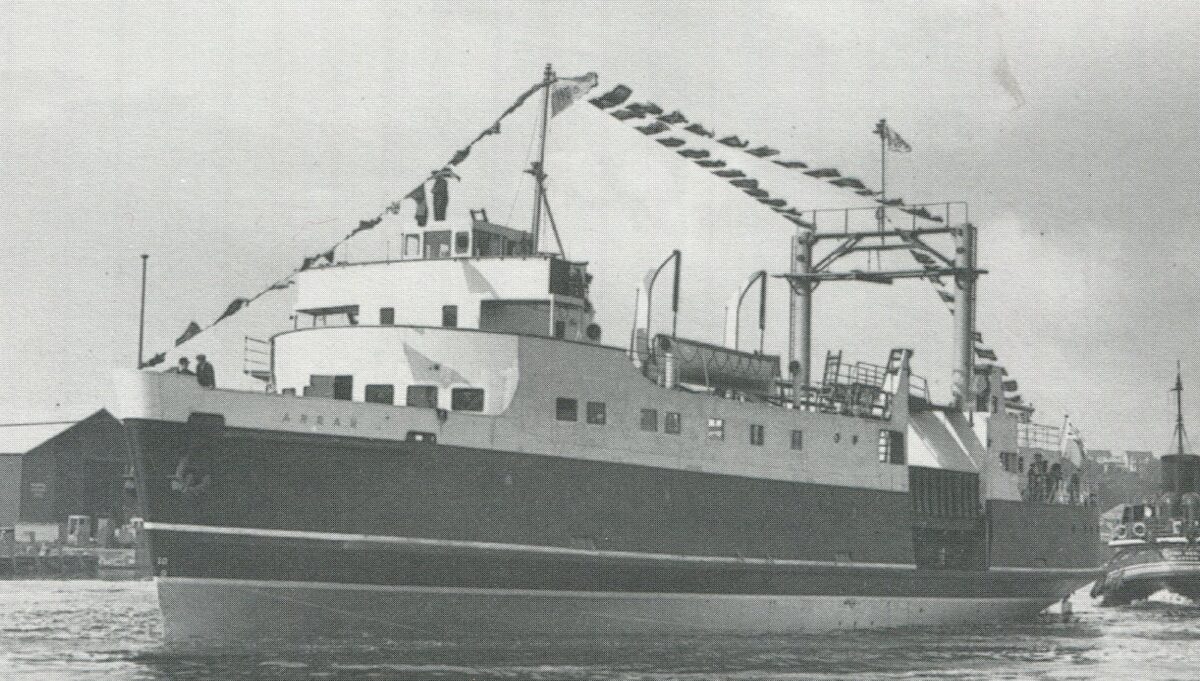
On Tuesday 23rd March 1954 the brand new Clyde car ferry Arran carried her 2,000th vehicle between Gourock and Dunoon with the lucky owner given a free ticket as a prize.
The Clyde had been slow to adopt drive on drive off ferries for carrying cars and other vehicles. Before 1954 cars were loaded onto the paddle steamers driven aboard over planks and parked by the funnels but that could only be done when the tide was right giving fairly level access to the promenade deck. And there was only room for a tiny handful of them at any one time anyway.
Red Funnel at Southampton had already been carrying cars for decades between Southampton and Cowes driven aboard onto the foredecks of their paddle steamers at any state of the tide from pontoons. The Southern Railway built ferries with drive on and drive off facilities at both ends to load at concrete ramps specially built for them at Portsmouth, Fishbourne, Lymington and Yarmouth in the 1920s and 1930s. And so on around the rest of the UK.
Now the Clyde was catching up. In 1953 four small new diesel passenger ship had been introduced which were cheaper to run than the paddle steamers. Now in 1954 there were three new drive on drive off car ferries. Arran ran her trials on 17th December 1953. Cowal was launched on 10th January 1954. And Bute ran her trials on 30th November 1954.
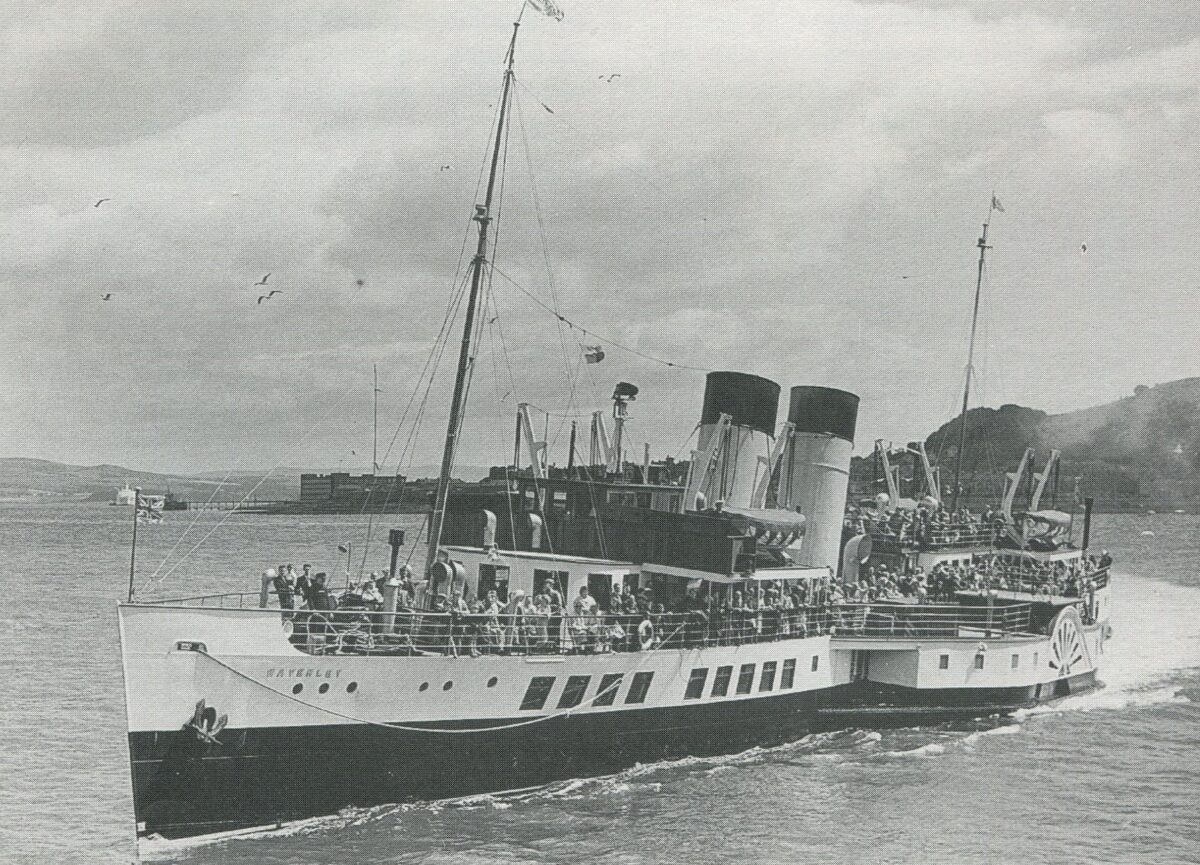
With seven new purpose built ships now in their fleet this inevitably had an effect on how the paddle steamers were rostered. In previous years Waverley had taken her place on the winter ferry services. On Monday 4th January 1954 she took the 11.35am sailing from Dunoon to Gourock and there, instead of swinging as usual to be head out for the return trip to Dunoon, she steamed straight on into the lay-by berth. There at Gourock waiting to take over from her was the brand new Arran.
Management now scratched their heads as to what to do with older vessels in their fleet. That winter only one, the turbine Glen Sannox was withdrawn and sent for scrap. The paddle steamers with their large passenger capacities were still very much needed to mop up the crowds on the ferry runs on busy summer Saturdays and other high days and holidays but their usefulness for ferry connections at other times and in winter, when intending passenger numbers were often low, was now in retreat.
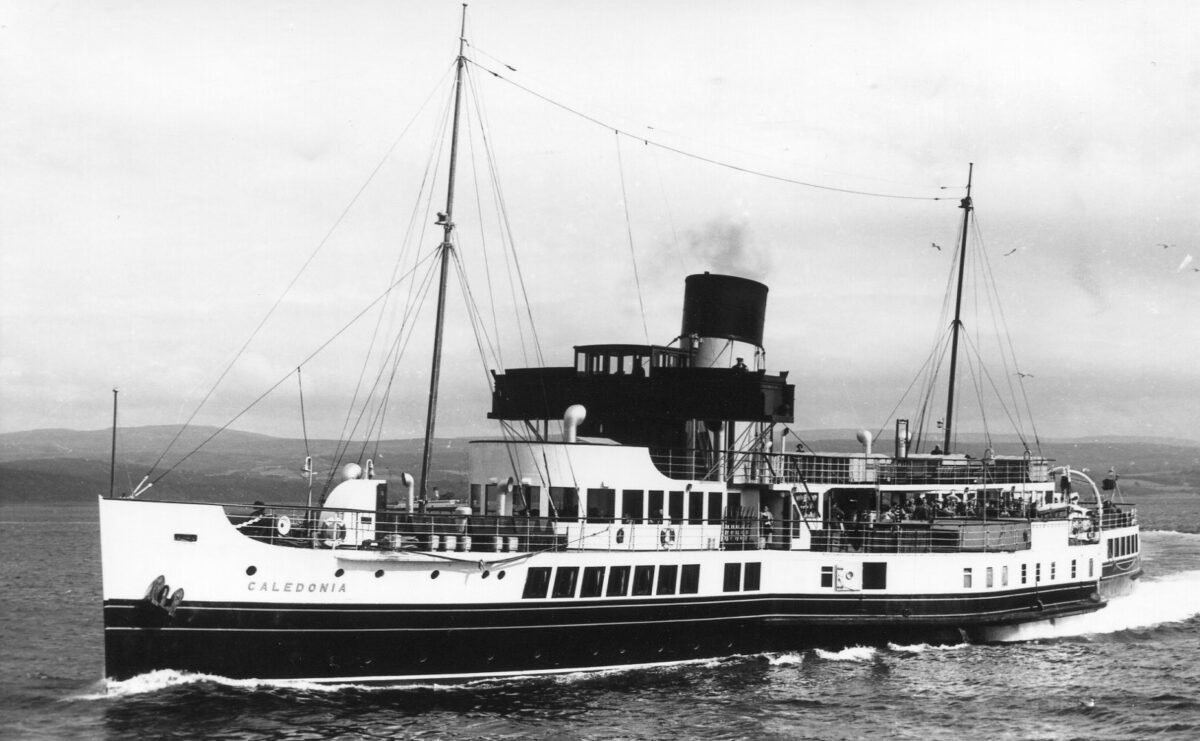
To find other employment for them when they were not needed on the ferry runs there was a stepping up of excursions in summer to give them something to do. For example the round Bute cruise became a daily event in 1953 usually taken by Jeanie Deans leaving Craigendoran at 12.40pm and calling along the way at Gourock, Dunoon, Innellan and Rothesay due back 6.50pm. For the summer of 1954 Caledonia was sent to be based at Ayr to run excursions and there she returned every summer up to 1964. And so on.
However, the car ferry business had a torch under it and took off way beyond expectations. Six months after she had started Arran had carried 10,000 cars. On one day alone in July 1954 Cowal carried 297 cars between Gourock and Dunoon where in July in the previous year there had been an average of just two a day.
The years 1953/54 changed the focus on the Clyde services. The outlook for the remaining paddle steamers was not good.
Kingswear Castle returned to service in 2023 after the first part of a major rebuild which is designed to set her up for the next 25 years running on the River Dart. The Paddle Steamer Kingswear Castle Trust is now fund raising for the second phase of the rebuild. You can read more about the rebuilds and how you can help if you can here.
John Megoran
This article was first published on 23rd March 2021.

